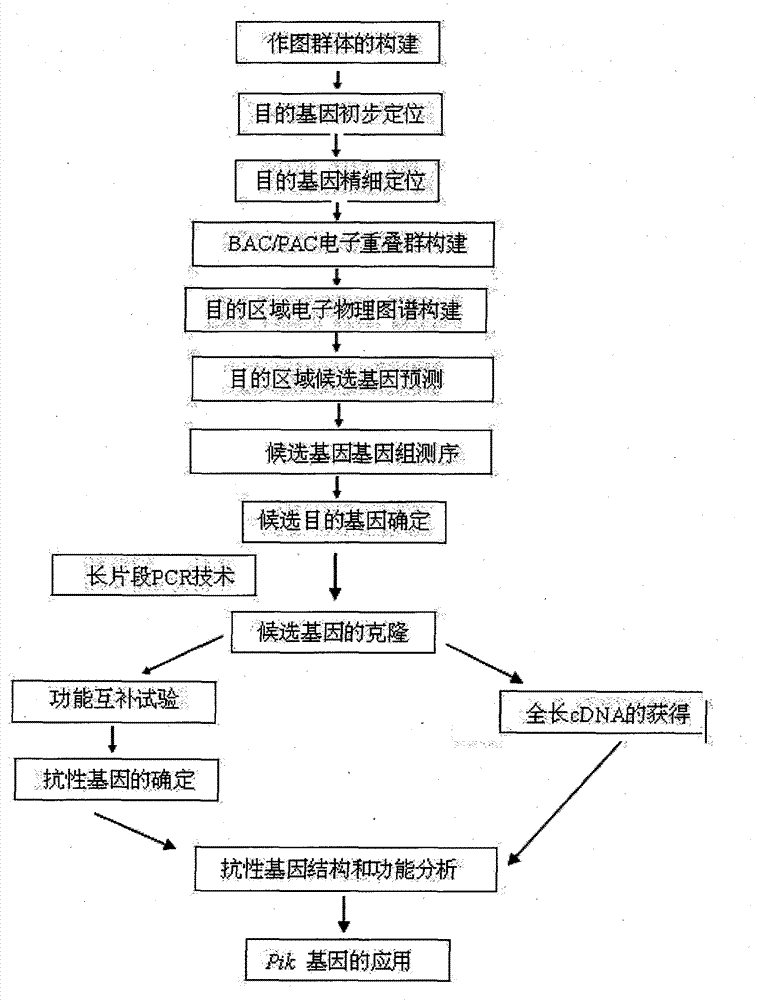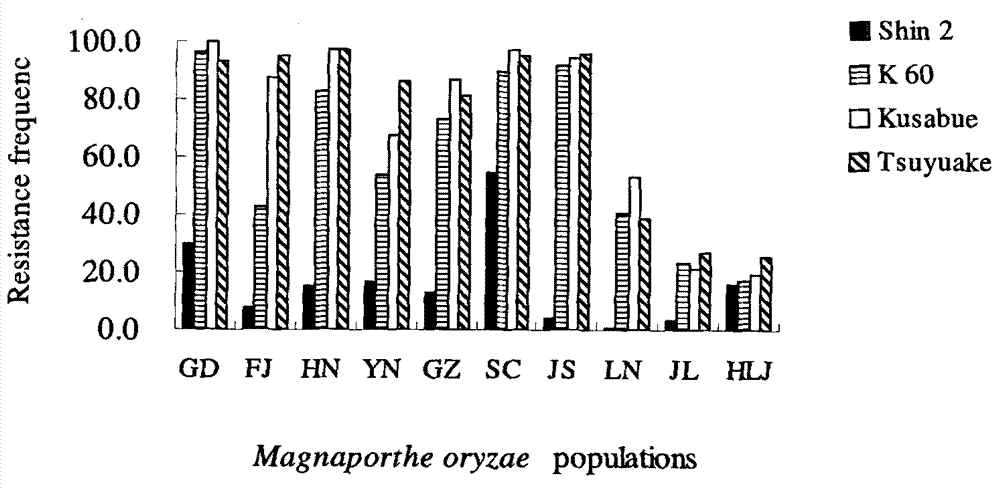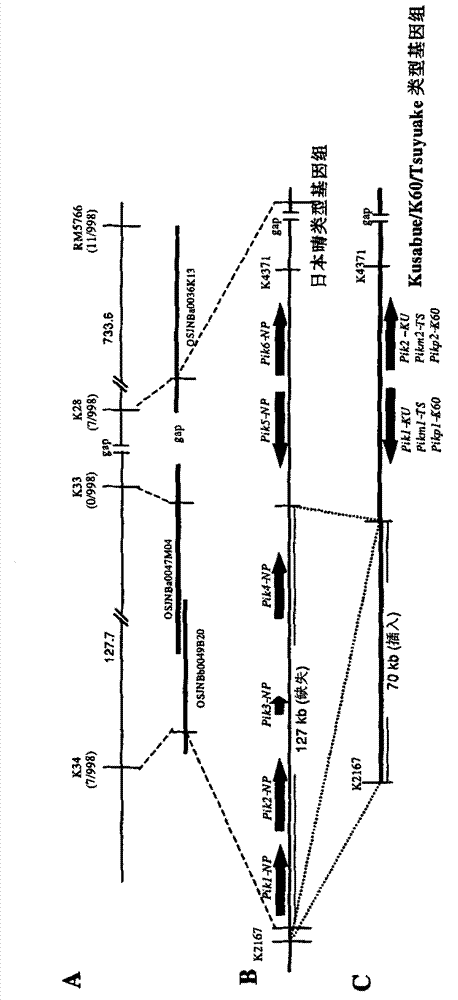Rice blast resistance gene Pik and application thereof
A technology of resistance gene and rice blast, which is applied in the field of genetic engineering, can solve the problems of lack of effective resistance gene, unresolved, disease-resistant varieties, etc., and achieve the effect of shortening the breeding time
- Summary
- Abstract
- Description
- Claims
- Application Information
AI Technical Summary
Problems solved by technology
Method used
Image
Examples
Embodiment 1
[0051] Example 1: Resistance characteristics of the resistance gene Pik
[0052] First, in order to compare and clarify the resistance spectrum of the four alleles (Pik, Pik-p, Pik-s, Pik-m) at the Pik locus, using 40), Hunan (HN, 40), Guizhou (GZ, 60), Yunnan (YN, 43), Sichuan (SC, 66), Jiangsu (JS, 72), Liaoning (LN, 108 ), Jilin (JL, 60) and Heilongjiang (HLJ, 63), a total of 612 strains collected were compared to the varieties held by the above four alleles (respectively Kusabue, K60, Shin 2 and Tsuyuake) analyze. The results showed that Pik showed high resistance to the blast fungus populations in Guangdong, Fujian, Hunan, Guizhou, Sichuan and Jiangsu. This shows that the gene can be used in the above regions. Biomaterial rice varieties Kusabue, Shin 2, K60, and Tsuyuake have been reported in the literature (Wang et al. Characterization of riceblast resistance genes in the Pik cluster and fine mapping of the Pik-p locus. Phytopathology, 2009, 99: 900-905) public.
Embodiment 2
[0053] Example 2: Location and Electron Physical Mapping of Rice Blast Resistance Gene Pik
[0054] F 2 Populations were inoculated with strains such as CHL346 that exhibited distinct non-affinity / affinity responses to parental varieties (strains isolated from single spores of Magnaporthe grisea). The results showed that these F 2 The segregation ratio of resistant plants and susceptible plants in the population was 3:1. It was inferred that the resistance of Kusabue to these inoculated strains was controlled by a pair of dominant genes. to these F 2 Linkage analysis of the resistance genes corresponding to the population showed that they were controlled by the same dominant gene. Therefore, a mapping population consisting of 499 individuals (equivalent to 998 gametophytes) was constructed. The biomaterial rice variety IR36 has been disclosed in literature (Lin et al. A high-resolution map of the rice blast resistance gene Pi15 constructed by sequence-ready markers. Plant ...
Embodiment 3
[0057] Example 3: Annotation and sequence analysis of rice blast resistance gene Pik candidate gene
[0058] In order to determine the candidate gene of Pik, the applicant used the reference sequence of Nipponbare, through three gene prediction software RiceGAAS (http: / / ricegaas.dna.affrc.go.jp), Gramene (http: / / 143.48.220.116 / resources / ) and Softberry's FGENESH (http: / / www.softberry.com) performed gene prediction and annotation analysis on the target gene region, and initially determined that the candidate resistance gene of Pik is 6 nucleotide binding sites and leucine-rich Candidate genes (Pik1-NP, Pik2-NP, Pik3-NP, Pik4-NP, Pik5-NP, and Pik6-NP) of nucleotide binding site-leucine-rich repeat (NBS-LRR).
[0059] The presence / absence (P / A) analysis of 6 candidate genes based on gene-specific markers showed that the 4 candidate genes (Pik1-NP, Pik2-NP, Pik3- NP, Pik4-NP) are absent in Kusabue. Therefore, the candidate resistance genes of Pik actually only have 2 Pik-1 and ...
PUM
 Login to View More
Login to View More Abstract
Description
Claims
Application Information
 Login to View More
Login to View More - R&D
- Intellectual Property
- Life Sciences
- Materials
- Tech Scout
- Unparalleled Data Quality
- Higher Quality Content
- 60% Fewer Hallucinations
Browse by: Latest US Patents, China's latest patents, Technical Efficacy Thesaurus, Application Domain, Technology Topic, Popular Technical Reports.
© 2025 PatSnap. All rights reserved.Legal|Privacy policy|Modern Slavery Act Transparency Statement|Sitemap|About US| Contact US: help@patsnap.com



